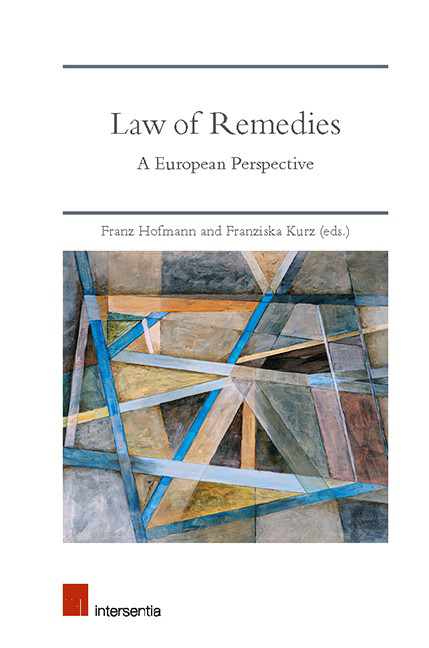Book contents
- Frontmatter
- Contents
- List of Cases
- List of Authors
- PART I THE ISSUE OF REMEDIES
- Introduction to the ‘Law of Remedies’
- Remedies in English Private Law – A ‘Stand-Alone’ Research Area?
- Remedies in Private Law from a German Perspective
- Rights and Remedies in Public Law
- Economics of Remedies: The Perspective of Corporate Law
- PART II MECHANISMS OF ENFORCEMENT
- PART III FUNCTIONS OF REMEDIES
- PART IV UNDERLYING PRINCIPLES
- PART V REMEDIES IN CONTRACT LAW AND INTELLECTUAL PROPERTY
- Index
- About the Editors
Remedies in Private Law from a German Perspective
from PART I - THE ISSUE OF REMEDIES
Published online by Cambridge University Press: 09 November 2019
- Frontmatter
- Contents
- List of Cases
- List of Authors
- PART I THE ISSUE OF REMEDIES
- Introduction to the ‘Law of Remedies’
- Remedies in English Private Law – A ‘Stand-Alone’ Research Area?
- Remedies in Private Law from a German Perspective
- Rights and Remedies in Public Law
- Economics of Remedies: The Perspective of Corporate Law
- PART II MECHANISMS OF ENFORCEMENT
- PART III FUNCTIONS OF REMEDIES
- PART IV UNDERLYING PRINCIPLES
- PART V REMEDIES IN CONTRACT LAW AND INTELLECTUAL PROPERTY
- Index
- About the Editors
Summary
DIVERGING INFLUENCES ON THE EVE OF THE CODIFICATION OF THE GERMAN CIVIL CODE
Put simply, the legal discussion prior to the codification of the German Civil Code was influenced by two schools of thought. On the one hand, there was the classical Roman approach of thinking in actiones. Private law was primarily perceived through the practical perspective of the remedies a iudex would grant. The actiones were at the centre of any effort of legal systematisation. The actio combined aspects that today in German law are found to be subject to both procedural law as well as, partly, to substantive law. Conceptually, one could say that the classical Roman approach of thinking in actiones granted by the iudex somewhat found a theoretical exaggeration in the theory of imperatives, even though no clear historical line can be drawn. The theory of imperatives not only focused in a practical way on what could be enforced judicially, but also denied the existence of legal norms in private law other than the enforceable imperatives altogether. The idea that imperatives serve to protect individual subjective rights was openly rejected.
On the other hand, on the eve of the codification of the German Civil Code, legal scholarship was also influenced by an already far-advanced idea of substantive subjective rights. As early as the Middle Ages some scholars are said to have differentiated between the judicially enforceable actio and the underlying substantive ius. The idea of subjective rights was an important element of the doctrine of natural law. Likewise, it played a central role in Kant's philosophy of law .
Savigny combined the idea of subjective rights existing regardless of judicial enforcement with the Roman thinking in actiones. The connecting theoretical link was Savigny's idea of a ‘metamorphosis’. Accordingly, every subjective right metamorphoses into a right of action as soon as it is infringed. Following Savigny every actio is based on the existence and infringement of a subjective right. Savigny had the ambition to include both absolute as well as relative rights in his theory of a metamorphosis. An absolute right only yields an action once it is infringed. The proprietor's rei vindicatio is legitimised by the opponent's wrongful possession.
- Type
- Chapter
- Information
- Law of RemediesA European Perspective, pp. 45 - 60Publisher: IntersentiaPrint publication year: 2019



